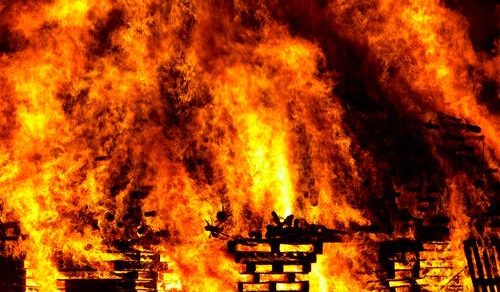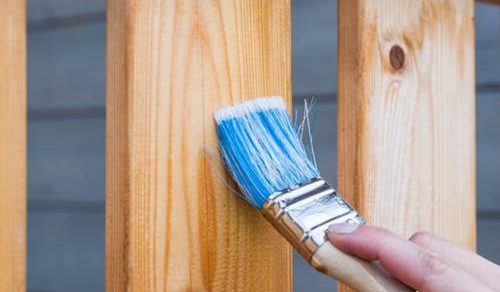What Are the Procedures Involved in Water Damage Restoration?
Water, while essential for life, can also be destructive when it infiltrates our homes and properties. Water damage can result from various sources, such as burst pipes, flooding, leaks, or storms, and it often brings about significant destruction and distress. Fortunately, water damage restoration is a comprehensive process that can help mitigate the damage, restore affected areas, and prevent further issues. This article will delve into the procedures involved in water damage restoration, from initial assessment to final restoration, highlighting the importance of swift and professional action in the face of water-related disasters.
What Is Water Damage?
Water damage refers to the destruction or harm caused to structures, belongings, and property due to the presence of excess water or moisture in an unwanted location. This damage can manifest in various ways, including:
- Structural Damage: Water can weaken the structural integrity of buildings, causing cracks, warping, and deterioration of materials.
- Mold Growth: Moisture-laden environments promote mold growth, which can lead to health hazards and further structural deterioration.
- Electrical Issues: Water can damage electrical systems, increasing the risk of electrical fires or electrocution.
- Health Hazards: Standing water can become a breeding ground for bacteria and pathogens, posing health risks to occupants.
- Aesthetic Damage: Water stains, discoloration, and peeling paint can mar the appearance of walls, ceilings, and floors.
- Damage to Belongings: Water can ruin personal belongings, furniture, and appliances.
What Is Water Damage Restoration?
Water damage restoration is the process of mitigating, repairing, and restoring property that has been affected by water damage. The primary goal of this restoration process is to return the affected area to its pre-damage condition, ensuring both the structural integrity of the property and the health and safety of its occupants.
Procedures Involved in Water Damage Restoration
1. Emergency Contact
When water damage is discovered, the first and most critical step in water damage restoration is to contact professional restoration experts like the PuroClean restoration specialists. Swift action is essential to minimize damage and prevent further issues. Experienced restoration experts are available 24/7 to respond to emergencies promptly.
2. Assessment and Inspection
Once the restoration team arrives, they thoroughly assess and inspect the affected area. This step includes:
- Identifying the Source: Determining the source of water intrusion is crucial to addressing the root cause of the problem. Identifying and addressing the source is paramount, whether it’s a burst pipe, a roof leak, a sewage backup, or natural flooding.
- Damage Extent Assessment: Restoration experts assess the extent of the damage to the property, including affected areas, structural components, and belongings.
- Restoration Plan: Based on their assessment, the restoration team develops a customized restoration plan that outlines the necessary steps and resources for the restoration process.
3. Water Removal and Extraction
The team removes standing water once the assessment is complete and the restoration plan is in place. They employ powerful pumps, wet/dry vacuums, and extraction equipment to remove water from affected areas efficiently. This step is crucial for preventing further damage, mold growth, and structural deterioration.
4. Drying and Dehumidification
After water removal, the property is thoroughly dried using industrial-grade dehumidifiers and high-speed air movers. The goal is to eliminate moisture from all surfaces and hidden areas within walls, ceilings, and floors. Proper drying is essential to prevent mold growth and secondary damage, such as warped wood or structural issues.
5. Cleaning and Sanitizing
With the area now dry, surfaces and belongings are cleaned and sanitized to remove contaminants and pathogens. Specialized cleaning agents and techniques are used to ensure the environment’s and occupants’ safety. This step is especially crucial when dealing with gray or black water, which may contain harmful bacteria.
6. Mold Inspection and Remediation
If mold is present or suspected, a mold inspection is conducted. If mold is found, it is safely removed and remediated to prevent its return. Mold remediation involves containment measures, safe removal, thorough cleaning, and preventive measures to discourage future mold growth.
7. Structural Repairs
Water damage often weakens the structural components of a property. Restoration experts assess the extent of structural damage and proceed with necessary repairs. This may include replacing damaged drywall, flooring, support beams, or other structural elements to ensure the property’s safety and stability.
8. Content Restoration
Belongings and furniture affected by water damage are carefully evaluated for restoration potential. Restoration experts use specialized techniques to clean, dry, and restore items whenever possible. This can include furniture, electronics, documents, and personal belongings.
9. Final Inspection
After completing all restoration procedures, a final inspection is carried out. Restoration experts thoroughly check for hidden moisture, ensure that all damage has been properly addressed, and confirm that the property is safe and habitable.
10. Restoration and Reconstruction
The final step involves the complete restoration and reconstruction of the affected area. This may include repainting, replacing damaged materials, reinstalling fixtures, and restoring the property to its pre-damage condition. The goal is to ensure the property is fully functional and aesthetically restored. If you want to learn about water damage restoration, visit this page.
Conclusion
Water damage can be a devastating and disruptive event for property owners. However, with the help of professional water damage restoration services, the effects of water damage can be mitigated, and properties can be restored to their former state. The key to successful water damage restoration lies in swift action, thorough assessment, and a systematic approach to removing water, drying, cleaning, and repairing affected areas.



